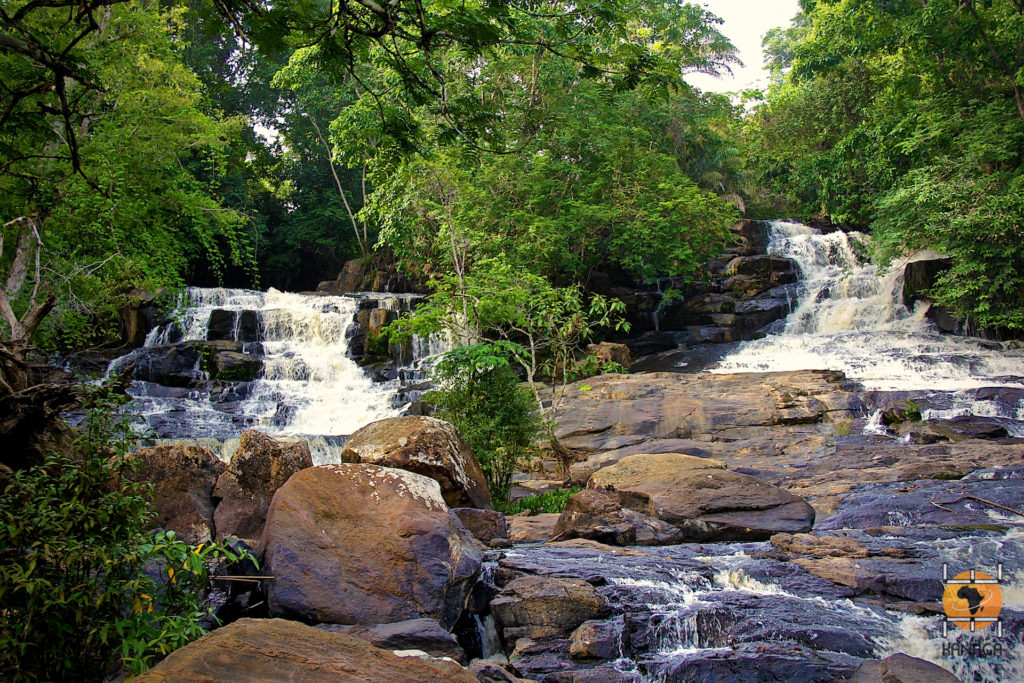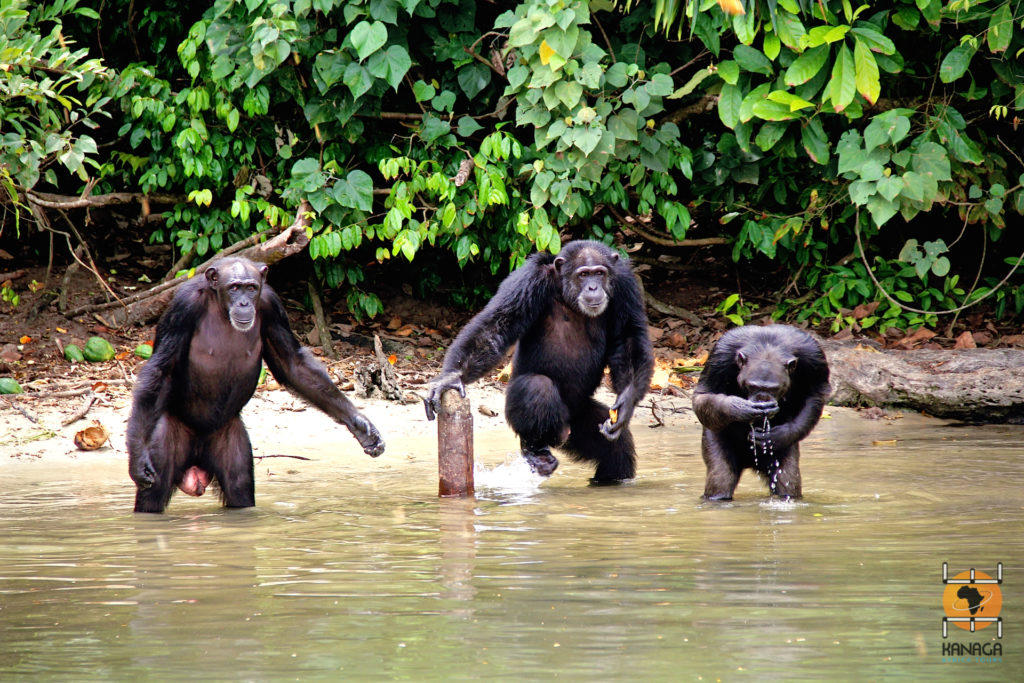Just a few dozen kilometres away from the busy and chaotic Monrovia, you can come into direct contact with a wild and primordial nature, with waterfalls, green hills and dense forests that are the ideal habitat for a very rich endemic flora and fauna.
To the south of Monrovia, near the village of Marshall, a boat reaches the Chimp Islands, an archipelago of river islands lying at the mouth of the Farmington River. Here live a hundred or so chimpanzees, bred in the 1970s for drug trials at the New York Blood Center, which closed its doors in 2006 after the US cut off funding. The chimpanzees were then left to fend for themselves on these islands and only the volunteer work of Liberia Chimpanzees Rescue has allowed them to survive. In an atmospheric riverine environment of mangroves and gallery forests, the chimpanzees live in a state of assisted freedom and make their way through the vegetation, intrigued by the passing boat and eager to receive a fresh mango from visitors.
But Liberia’s hinterland holds the most amazing naturalistic surprises, along the least travelled tracks in the whole of West Africa, in a territory covered 40% by primary forests. An explosive tropical nature that extends as soon as you leave the fertile coastal plains behind, climbing up through the lush central plateaus, dense with rainforest, to the highest peaks of the Nimba Mountains, a UNESCO World Heritage Site, a treasure trove of an extraordinary ecosystem of highland grasslands and dense thickets that are home to numerous endemic species of flora and fauna, shared with neighbouring Guinea and Côte d‘Ivoire.
Little jewels open up like precious gems set in the wildest vegetation. These are the spectacular Kpatawe Falls, an oasis of cascading waterfalls on the edge of the Bomi Hills, which also host, further west, Lake Bomi, known as the “Blue Lake” because of its extraordinary colour, formed in the crater of an old iron mine and which is the counterpart to the even more impervious and spectacular Lake Bomi, near Yekepa. Not far from the Nimba Mountains Reserve, it too looks like a small blue sapphire formed on a pre-existing mining site, set between scenic emerald green terraces. A scenic spectacle hidden among the morphological reliefs of deepest Liberia, it is a habitat for butterflies, numerous bird species, chimpanzees and the rare otter-like potamogalinae.
In the heart of the southern region is the naturalistic gem of Sapo National Park, a vast area of rainforest that is one of the most important in West Africa. Together with the nearby Tai Park in the Ivory Coast, it forms the richest reserve of endemic plants, with some tall species reaching 60 metres in height. Gigantic natural monuments that host the last sanctuaries of the increasingly rare pygmy hippos, forest elephants and families of chimpanzees.







